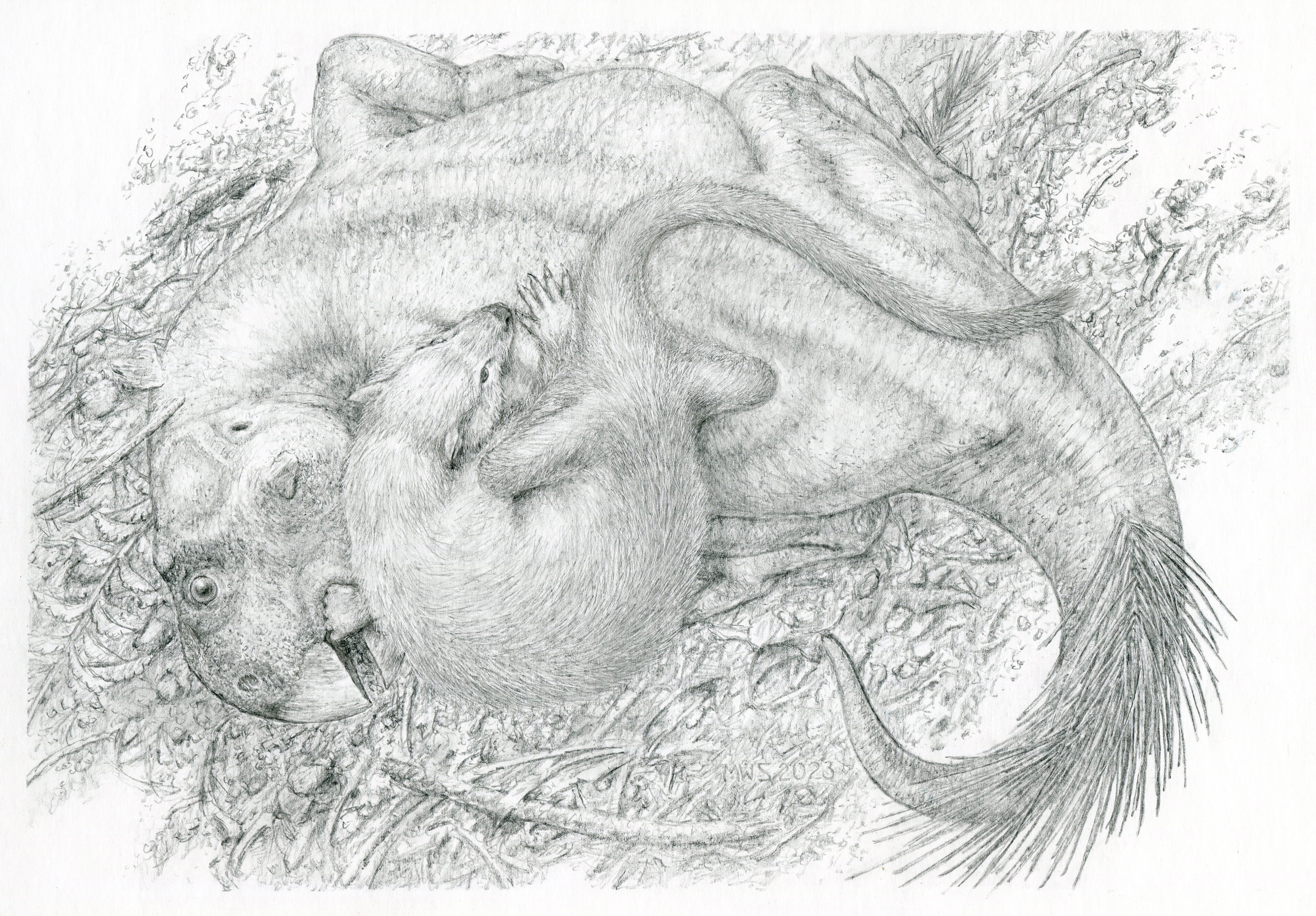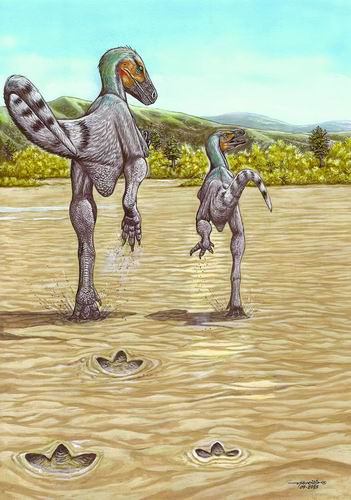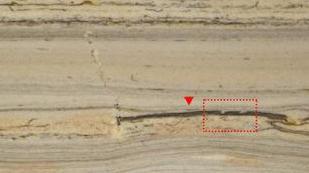

Artistic reconstruction: 125 million years ago, a Psittacosaurus was attacked by a strong reptile. Michael Skrepnick
"We don't know where in the world we can find such fossil evidence except here."
Late at night on July 18, a newly published paper in the international academic journal "Scientific Reports" (Scientific Reports) showed an extremely rare fossil discovered in Liaoning, China.
Dinosaurs Were Dinner for Small Cretaceous Mammals?
Some people may have thought that the "earth overlord" dinosaurs during the Cretaceous period would also be preyed-by other dinosaurs, or other animals. One can even imagine the scene. But no one can see it all so intuitively.

Fossils of a hardy reptile and a psittacosaurus. Scale bar is 10 cm. Han Gangtu
Until such a fossil was excavated from the Lujiatun Formation of the Early Cretaceous Yixian Formation near the Lujiatun Formation in Xiaobeigou Village, Shangyuan Town, Beipiao City, Chaoyang City, Liaoning Province, China in May 2012. It is called "China's Dinosaur Pompeii".

The hillside where the Psittacosaurus-Reptile fossils were found. Han Gangtu
Seven years later, in 2019, Dr. Wu Xiaochun, a paleontologist at the Canadian Museum of Natural History, noticed this specimen in the laboratory of Professor Han Gang, one of the authors of the paper, at Bohai University at the time. Then the two sides began to conduct research.
Currently, this Psittacosaurus-Reptile specimen fossil is housed in the museum of Ziguang Experimental School in Weihai, Shandong Province.
A strong reptile, a badger-like mammal, is tearing at the ribs of a Psittacosaurus. The herbivorous Psittacosaurus was one of the earliest known horned dinosaurs. "These two animals were locked in a life-and-death struggle," said corresponding author Jordan Mallon, Ph.D., a paleontologist at the Canadian Museum of Nature.
On the evening of July 18, 2023, Dr. Wu Xiaochun, another author of the paper, said that 18 years ago, in 2005, colleagues from the Institute of Vertebrate Paleontology and Paleoanthropology, Chinese Academy of Sciences published an article in the academic journal Nature The article first reported the phenomenon of "reptiles catching dinosaurs", because remnants of Psittacosaurus bones were found in the stomach of strong reptile fossils, that is to say, reptiles ate meat. But did it scavenge, eat the carcass of a Psittacosaurus, or prey on a living dinosaur? There was no evidence at the time. But newly reported fossil specimens prove that the reptiles grabbed live dinosaurs to eat. In addition, in terms of ecology, the Lujiatun area has preserved a large number of animal fossils, such as 14 genera and 17 species of dinosaurs, and 7 genera and 7 species of mammals; Psittacosaurus may also have been an important link in the food chain and ecology at that time. "If we continue to excavate, we can't rule out that there may be (similar fossils)." " Nowhere else in the world has (such a fossil) been found ."

Artistic reconstruction: 125 million years ago, a strong reptile preyed on Psittacosaurus. Michael Skrepnick
Wu Xiaochun introduced that in terms of body size, the preyed Psittacosaurus was much larger than the strong reptile.
Among the fossils, the strong reptile has a body length of 46.7 cm, and the body length of Psittacosaurus is 119.6 cm. Both animals were subadults at the time of death.
Fossils show that the strong reptile lay on the upper left side of Psittacosaurus, its left claw clasped the dinosaur's jaw tightly, and its left hind leg was sandwiched between the dinosaur's folded left legs. At the time of death, the teeth of the strong reptile had penetrated into the chest cavity of Psittacosaurus.
The researchers speculate that the hardy reptile was trapped and buried by volcanic ash or mudslides while preying on Psittacosaurus.
Ma Long and Wu Xiaochun and their colleagues believe that the reptile was preying on Psittacosaurus, rather than gnawing on a Psittacosaurus carcass. Because there are no teeth marks left on the dinosaur skeleton; in addition, if the Psittacosaurus had died before encountering the reptile, it is unlikely that the two animals would be so "entangled" together; the reptile The position on the back of Psittacosaurus also indicates that the reptile was the attacker.
The research team consisted of Professor Han Gang from Hainan Vocational University of Science and Technology, Hainan Institute of Tropical Oceanography, Dr. Li Lingji from Weihai Ziguang Experimental School, Dr. Jordan Malone, Dr. Aaron Lussier and Dr. Wu Xiaochun from the Canadian Museum of Natural History. The research group started to carry out at the end of 2019.
In the paper, the researchers speculate that deposits from volcanic eruptions in Lujiatun, Liaoning, China, will continue to uncover new specimens and evidence of species fighting each other.
Attached paper link: https://www.nature.com/articles/s41598-023-37545-8


